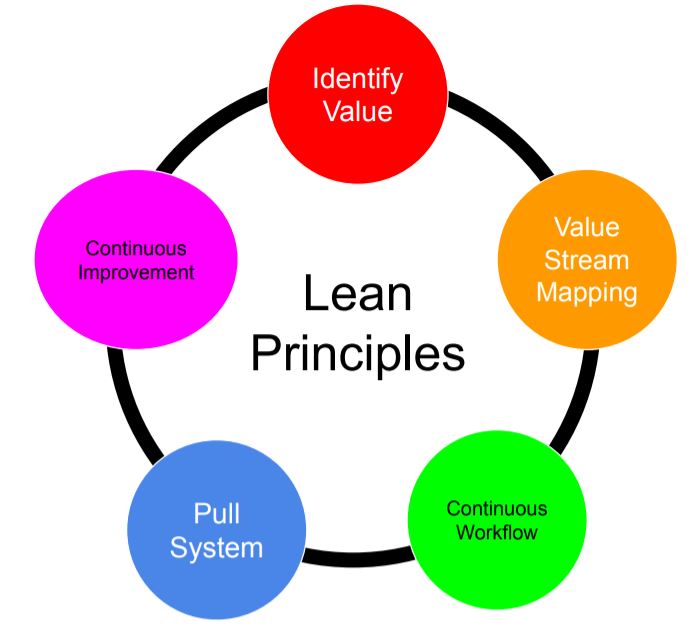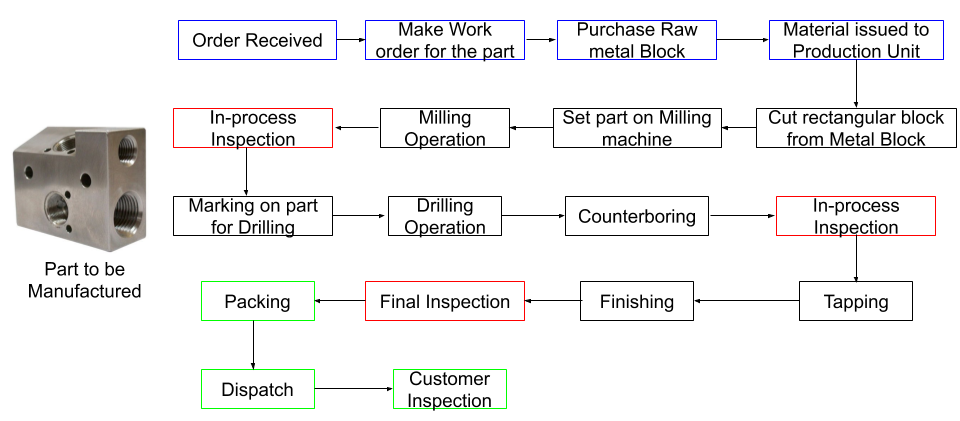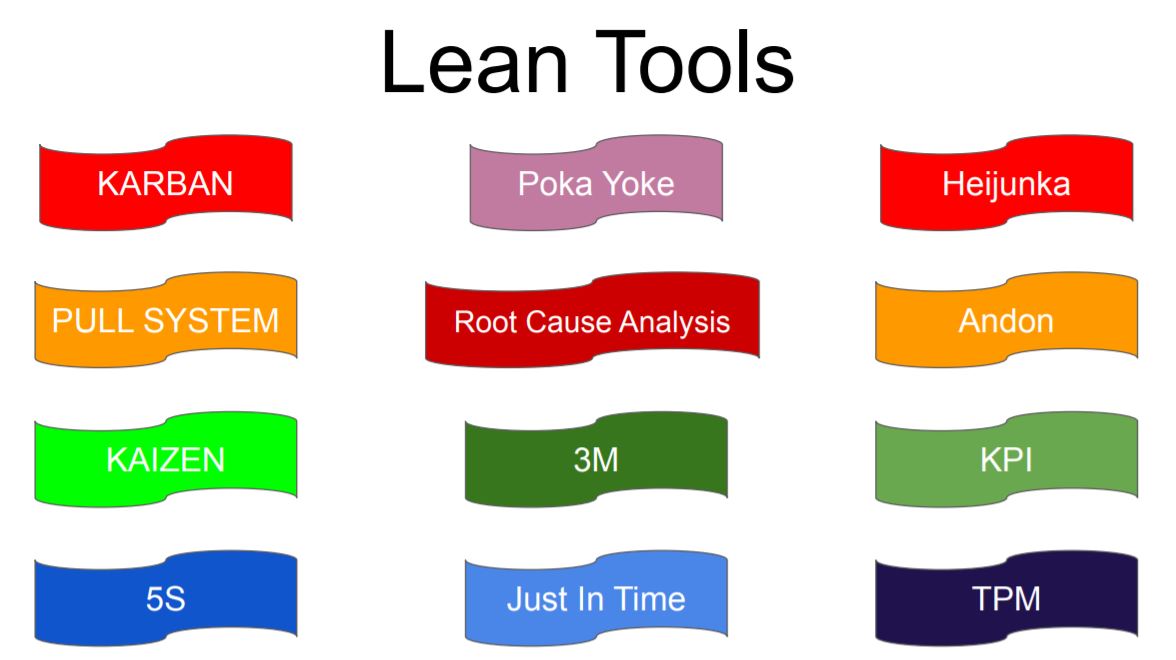In an enterprise, resources are not utilized with 100% efficiency. This loss in efficiency is known as waste. The ultimate goal of an organization is to reduce this waste to zero. Lean manufacturing is a technique to reduce waste in an industry or organization.
In this article, we will focus on what is lean manufacturing? Why do we need Lean and tools used to implement lean manufacturing in any enterprise?
What is Lean Manufacturing?
Lean manufacturing is a technique derived from Toyota’s 1930 Toyota Production System or TPS. Its goal is to eliminate waste and improve efficiency by utilizing five principles of lean manufacturing.
We can reduce waste (activities that add no value to the customer) in an industry by taking full advantage of available resources (human, machines, material, or product). As a result of a reduction in wastage, overall efficiency increases and customer gets more value for their products.
Please note the concept of lean manufacturing is not limited to manufacturing companies only. You can apply it to any industry such as design center, outsourcing, or construction.
Types of Waste in Lean Manufacturing
The ultimate goal of lean thinking is to eliminate waste. Therefore to understand Lean Thinking, we need to understand what is considered waste in the industry. According to Toyota Production System or TPS, waste can be of the following three types.
- Muda (Non-Value added Processes or Process waste)
- Mura (inconsistency)
- Muri (overburden)
Muda : Non-Value added Processes or Process waste
Muda stands for Non-value added tasks or Process waste. Non-value-added tasks are the tasks that add no value to your customer. We can classify Muda into two types.
Muda Type 1
It involves tasks that do not add any value to the customer. But you can not skip these tasks. For example, packing a product is a waste for a customer, but it is mandatory for the safe transportation of the products.
Muda Type 2
It involves the non-value-added tasks that you can eliminate to save customers money. For example, defects in a product, excessive movement of product, inventory, non-utilization of resources are examples of Muda in an industry.
Mura: Inconsistency
Mura Stands for inconsistency or non-uniformity in the distribution of work. For example, Consider two engineers working in a company at the same level. If “Engineer A” is doing overtime to deliver given tasks. Whereas “Engineer B” finishes his work in half a day.
In the above example, we can sense some problems with the distribution of work that needs to be corrected. Therefore it is always recommended to do proper distribution of work between employees and machines.
Muri: Overburden
Muri Stands for Overburden. In a system, if you assign more tasks or give responsibility only to a few people or machines. These resources will end up doing more work while others sitting idle. As a result, they can not give their 100%. This waste is known as Muri due to the uneven allocation of resources.
For example, if a factory utilizing machines or a workforce with more than 100% capacity can cause machine breakdown or workforce dissatisfaction.
Basic Lean Principles to create a Lean System
Implementing Lean principles in a system company or industry develops an approach towards continuous improvement. Following five principles can be used to create a Lean System in the industry.
- Identify the value you want to deliver to your customer.
- Mapping the Value Stream.
- Continuous Workflow.
- Pull System.
- Continuous Improvement.
Let’s discuss these five lean principles in detail.

1. Identify Value for your Customers
An industry can grow only when it continuously increases its product’s value for its customers. Here the value for a customer is what they are willing to pay for a product or service.
The value of a product can be increased by:
- Reducing product cost.
- Improve product quality.
- Increase in user satisfaction.
- Providing better product from the previous one.
- Providing more or better services of function in a product.
For example, a music streaming app can increase its streaming app product value for premium customers by removing ads. Or if you are a brake pad manufacturer for OEM. You can increase your product value by improving product quality, timely delivery, or reducing manufacturing costs.
Therefore the first step in lean manufacturing is to identify areas where you can provide more value to your customers.
2. Mapping the Value Stream
Once you identify the area where you want to increase the value for your customer, the next step is mapping the value stream.
Mapping involves writing down all activities to manufacture the part and deliver it to the customer. In the context of manufacturing part using machining operation involves activities shown in the image below.

As shown in the above image, manufacturing a metal block involves activities, from raw material purchase to product dispatch to the customer. Mapping in the value stream is done to identify non-value-added activities or waste and eliminate them from the manufacturing process.
For the above examples, non-value-added activities to manufacture machine block can be reduced by:
- Utilizing the same raw material to manufacture different parts will reduce stock requirements in the inventory.
- Using a Jig or fixture for a component set up in the milling and drilling machine.
- Reducing the number of inspection stages.
3. Continuous Workflow
After we identify and remove the waste or non-valuable operations. Next step is to ensure that these changes do not have any impact on the product quality.
Afterward, these changes are conveyed to all stakeholders and implemented on the shop floor.
4. Pull System
Inventory is also waste or non-productive in a production system. Therefore the pull system is used to minimize or remove the stock from the inventory.
In the Pull system, a customer has to pull the product from the manufacturer when required (With some Lead time). In this way, a manufacturer does not need to build products in advance. They manufacture new parts as per actual orders, not as per forecasting.
In this way, We can minimize the raw material inventory and finished product stock. For example, car manufacturers take booking for premium high-value cars. In this way, they have a fair idea about demand for a particular model, and production planning is done accordingly.
5. Continuous Improvement to achieve Perfection
There is always a better way of doing things. One of the five basic principles for lean manufacturing is to reach for perfection. To achieve perfection Continuous-Improvement should be in company culture.
Kaizen (change for the better) is a Japanese philosophy used for continuously improving manufacturing operations. The Kaizen involves all employees in the organization. Teamwork, personal discipline, improved morale, quality circles, and suggestions for improvement.
Essential Lean Manufacturing Tools
Here is the list of essential tools to implement lean thinking in the industry. It is not mandatory to use all Lean tools in all scenarios. The best practice is to select the right approach according to requirements.

Kanban
Kanban is a workflow management technique that helps in scheduling various activities. It helps in visualizing workflow, maximize efficiency and improve continuously. To achieve these goals following Kanban practices are used:
- Visualize the Workflow
- Limit work in progress
- Manage Flow
- Make process
- Get Feedback
- Improve Collaboratively
Pull System
In the Pull system, a customer pulls products from the manufacturer according to the requirements (With some Lead time).
In this way, a manufacturer does not require to build products in advance. They can manufacture new parts as per actual orders, not as per forecasting.
Kaizen : Continuous Improvements
Kaizen is a Japanese term that means “continuous improvement” that involves all employees. It can include any change in the product manufacturing process to improve quality, reduce cost, increase product value or eliminate waste.
Teamwork, discipline, improved morale, quality circles, and suggestions for improvement are key Kaizen elements.
5S : Scientific way to manage the Workplace.
5S is a scientific way to manage a workplace. Here 5S stands for following five steps to managing things in order and cleaning regularly.
- Sort
- Set in Order
- Shine
- Standardize
- Sustain
The Poka-yoke technique is a type of mistake-proofing technique that involves finding the root cause of the error and ensuring errors or mistakes do not occur during the manufacturing or operation of the product.
It is a tool to prevent manufacturing and user-related errors and improve customer satisfaction. Following two techniques are used in Poka-Yoke to avoid mistakes during product operation and manufacturing. Click this link for more details on poka-yoke techniques in Lean Manufacturing.
- Make sure error does not occur in the first place.
- If an error occurs, the error becomes obvious. In other words, Mistakes should be detectable.
Root cause Analysis
Root cause analysis is a systematic problem-solving technique that involves finding the root cause of the problem to solve it. This process involves some of the following steps.
- Define the problem.
- Collect data.
- Identify issues that contributed to the problem.
- Find the root cause.
- Identify and Implement the solution.
3M : Waste Elimination
This is the same Toyota Muda, Mura, and Muri model discussed above for waste elimination.
Just in Time (JIS)
Just-in-Time or JIT or Toyota Production System (TPS) is an inventory management technique used to reduce the time within the production system. It helps in increasing efficiency, reducing waste and manufacturing costs.
Heijunka : Reduces manufacturing Lead time and Inventory.
Heijunka is a lean method of fulfilling customer demands without pressurizing the manufacturing unit. It helps in optimizing and utilizing manufacturing capacity in the best possible way to meet demand.
Heijunka helps in processing orders according to customer demands rather than manufacturing them in batches.
Andon : Visual feedback system (indicates production status, alerts etc.)
Andon in Lean Manufacturing is a visual feedback system used to alert production about any problem or production status in real-time. As a result, the Production team can take appropriate action without any delay.
KPI (Key Performance Indicators)
Manufacturing Key Performance Indicators (KPI) are used to measure and track performance towards organizational goals. KPI’s provide required data to identify improvement areas and reduce waste.
Total Productive Maintenance (TPM)
Proactive and preventative maintenance helps in reducing machine downtime. Latest technologies such as IoT in manufacturing and Machine Learning in manufacturing are playing a key role in total productive maintenance,
Benefits of Lean Manufacturing
Following are the benefits of implementing lean principles in manufacturing.
- Better utilization of resources.
- Reduced Inventory
- Increased Productivity.
- Improved Quality
- Reduced manufacturing cost.
- More value to customers.
- On-time delivery.
We will keep adding more details in lean manufacturing. Add your suggestions, comments, or questions on Lean Manufacturing in the comment box.

Add a Comment